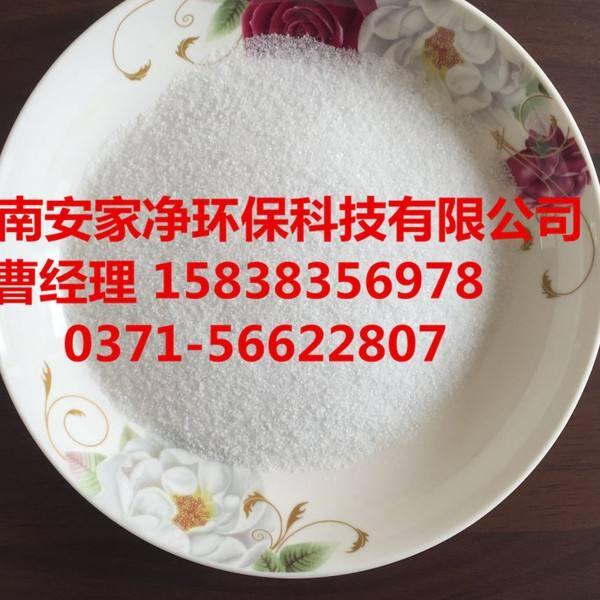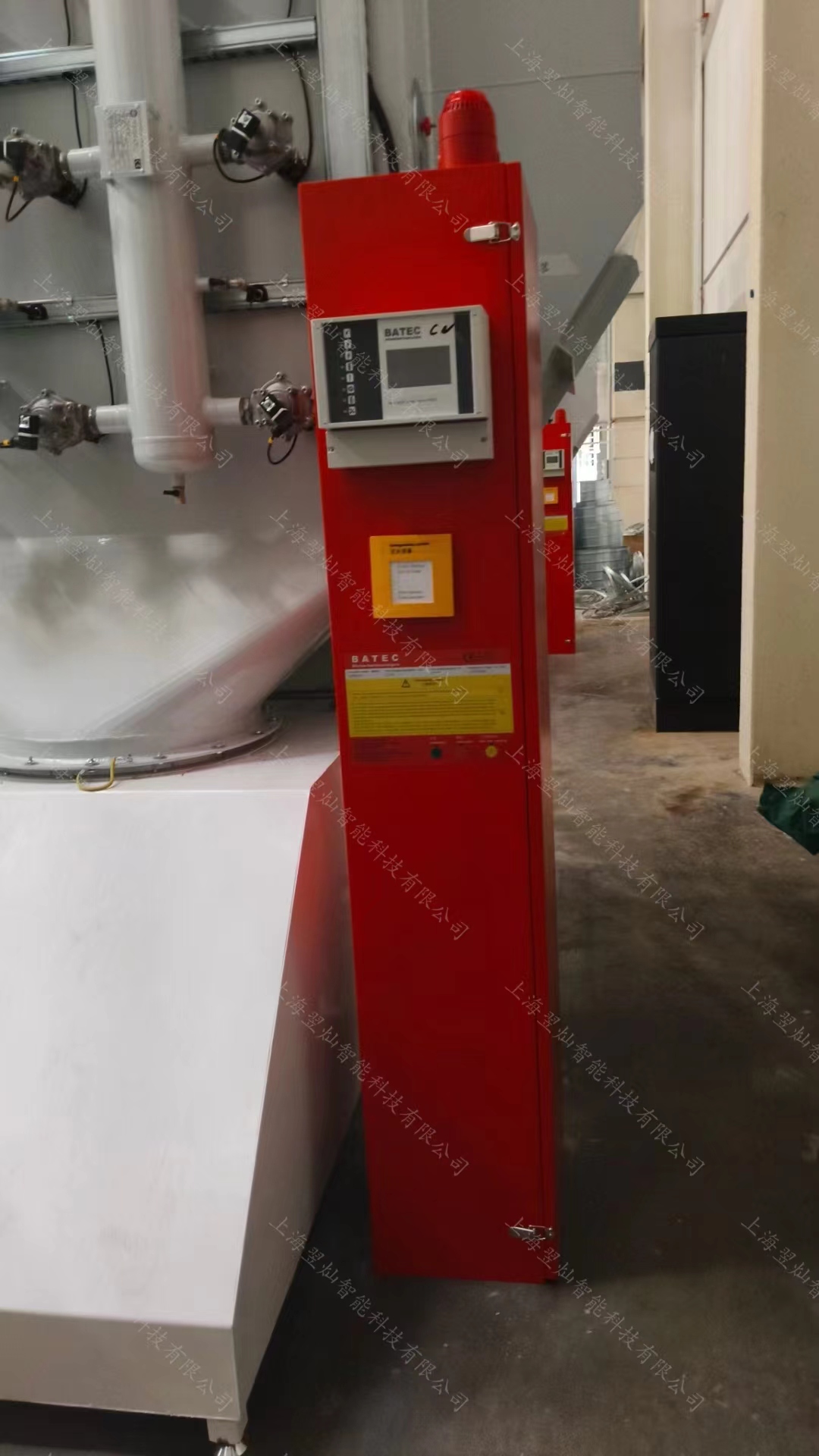
昆明尾矿废水 沉淀剂阴离子 聚丙烯酰胺pam聚合氯化铝pac高含量喷雾聚氯化铝厂家报价
产品价格:¥2000(人民币)
商铺名称:河南安家净环保有限公司
联系人:曹经理(先生)
联系手机:
固定电话:
企业邮箱:1090222013@qq.com
联系地址:河南巩义永安路经济开发区
邮编:
联系我时,请说是在智能安防网上看到的,谢谢!
商品详情
说,我们会提到聚丙烯酰胺产品的分子量,但有些客户会询问它们的粘度。聚丙烯酰胺的分子量与其粘度有一定的关系。确定聚丙烯酰胺分子量的方法之一是测量其粘度方法。可以看出,聚丙烯酰胺的粘度和分子量之间存在一定的关系!
在正常情况下,聚丙烯酰胺的分子量越高,粘度越大,因为聚丙烯酰胺大分子是细小的长链状体,并且在溶液中的运动阻力很大。粘度的本质是溶液中的摩擦量,也称为内摩擦系数。各种高



分子有机化合物的萄糖酸钠应用:
混凝土是一种组合物料,由水泥、集料、掺合剂和水制成。混凝土是所有人工制造的物料中量的。混凝土中四分之三是集料,然而在混凝土中活性的成分是 水泥浆。混凝土的性质和性能主要决定于水泥浆的性质。混凝土中的掺合剂能提供一些有益的作用如加速凝固,延缓凝固,使空气成气泡状存在,减少用水量和增加 塑性等等。通常在水泥中同时使用数种掺合剂,各种不同的掺合剂在一些应用中能互相强化。
葡萄糖酸钠可以作为掺合剂用在混凝土中,它在混凝土中的功能如下: 减水剂和缓凝剂葡萄糖酸钠一般是单独使用,但是也可以与其它缓凝剂如碳水化合物和磷酸盐配合起来使用。葡萄糖酸钠是一种结晶的粉末。是在妥善规定和控制的条件下生产出来的。此化合物是化学纯的并且无腐蚀性。质量是恒定的。这些特点能保证它在应用中有可靠的和重复性的结
溶解性:极易溶于水,略溶于酒精,不能够溶于Sodium gluconate application:
Concrete is a composite material made of cement, aggregate, admixture and water. Concrete is the most abundant of all manufactured materials. Three quarters of concrete is aggregate, but the most active component in concrete is cement slurry. The properties and properties of concrete mainly depend on the properties of cement slurry. The admixtures in concrete can provide some beneficial effects, such as accelerating solidification, delaying solidification, making air bubbles, reducing water consumption and increasing plasticity, etc. Usually several admixtures are used in cement at the same time, and different admixtures can reinforce each other in some applications.
Sodium gluconate can be used as admixture in concrete. Its function in concrete is as follows: water reducer and retarder sodium gluconate are usually used alone, but can also be used in combination with other retarders such as carbohydrates and phosphate. Sodium gluconate is a crystalline powder. It is produced under the conditions of proper regulation and control. The compound is chemically pure and non-corrosive. The mass is constant. These characteristics can ensure that it has reliable and repeatable knots in application.
Solubility: extremely soluble in water, slightly soluble in alcohol, not ether
Use:
使用:
用作钢铁外表清洗剂:
钢铁外表如需要镀钵、镀铬、镀锡、镀镍以习惯特别用处时,如制作马口铁,镀锌板,外表镀铬(电度)等,其钢坯外表均需经过严格清洗,使镀层物与钢铁外表结实结合,这时候其清洗药剂中添加葡萄糖酸钠将会到达十分理想的效果。这一点已经被国际上制作马口铁的大公司所证实。
用作水泥掺合剂:
水泥中添加一定数量葡萄糖酸钠后,可增加混凝土的可塑性和强度,且有阻滞作用
即推延混凝土的开始与终究凝固时期,例如添加0.15%的葡萄糖酸钠,可将 混凝土的初凝 固时刻延伸10倍以上,也就是将混凝土的可塑时刻从几小时延伸至几天,而不影响其牢 度。可塑性与推迟开始凝固时刻在混凝土作业中是非常重要的问题,如在高温度季节施工及大型的工程作业中,推迟开始凝固时刻则是个难题,葡萄糖酸钠可满意解 决这个问题。别的高温时胶接油井是比较困难的,添加了葡萄糖酸钠后的混凝土在170℃高温下,在几个小时内可塑,因而也能满意解决上述问题。因而葡萄糖酸 钠作为水泥掺合剂在国外已很多使用于重要的建筑工程,如中东的很多桥梁工程中。但是我们国内在这方面使用也还未推广使用,据说有在造纸废水中提炼纤维素磺 酸钠,其效果与葡萄糖酸钠根本是不可相提并论的。
此外还可在电镀,胶卷制作工业中使用。
作为一种多羟基羧酸型优秀的缓蚀阻垢剂葡萄糖酸钠,由于具有上述诸多特异性质,如能在使用技术上肯下功夫,必将会被开发成一个很大的工业。
Used as steel surface cleaner:
When steel appearance needs to be plated with bowl, chromium, tin and nickel for special use, such as tinplate, galvanized sheet and chromium plating, the billet appearance needs to be cleaned strictly, so that the coating can be firmly combined with the steel appearance. At this time, the addition of sodium gluconate in the cleaning agent will be very reasonable. Think about the effect. This has been confirmed by large international companies that make tinplate.
Used as cement admixture:
When a certain amount of sodium gluconate is added to cement, the plasticity and strength of concrete can be increased, and the effect of retardation can also be found.
That is to say, delaying the beginning and final solidification period of concrete, such as adding 0.15% sodium gluconate, can extend the initial solidification time of concrete more than 10 times, that is, to extend the plastic time of concrete from several hours to several days without affecting its fastness. Plasticity and delaying the beginning of solidification are very important problems in concrete operation. For example, in high temperature season construction and large-scale engineering operation, delaying the beginning of solidification is a difficult problem. Sodium gluconate can solve this problem satisfactorily. It is difficult to bond oil wells at other high temperatures. The concrete with sodium gluconate can be plastic in a few hours at 170 C, so it can solve the above problems satisfactorily. Sodium gluconate, as a cement admixture, has been widely used in important construction projects abroad, such as many bridges in the Middle East. However, the use of sodium cellulose sulfonate has not been promoted in China. It is said that sodium cellulose sulfonate is extracted from paper-making wastewater, and its effect is not comparable with sodium gluconate.
In addition, it can also be used in electroplating and film making industry.
Sodium gluconate, as an excellent corrosion and scale inhibitor of polyhydroxycarboxylic acid type, will be developed into a large industry if it can make technical efforts due to its many specific properties mentioned above.
溶液具有高粘度并随着分子量的增加而增加。
经过我们聚丙烯酰胺多年的研究,聚丙烯酰胺的絮凝性能与其溶液粘度直接相关。聚丙烯酰胺的粘度越高,性能越好,即聚丙烯酰胺的分子量越高。产品性能越好;如果其粘度因某些因素而降低,其絮凝性能将不可避免地下降。然而,聚丙烯酰胺溶液的粘度受许多其它因素的影响,例如温度,湿度,溶解过程中的要弄清楚聚合氯化铝与聚丙烯酰胺哪个是絮凝剂,首先我就要弄清楚混凝剂与絮凝剂的区别。混凝是指药剂投加进水中水解后对废水中胶体进行压缩电双分子层,使得脱稳、破乳凝聚形成絮体的一个过程。絮凝则是将各小的絮体,胶体颗粒进行吸附架桥,网捕沉淀,主要外表为粘结成大块的絮体现象,絮凝剂不具备凝聚作用。混凝=凝聚+絮凝。
聚丙烯酰胺是一种新型的无机盐铁系高分子水处理药剂,具有对废水中的溶质、胶体和悬浮物具有电子中和的作用。特别是高聚物形态使它废水中溶解后生生长线的状,两端可将水中的这些物质进行吸附架桥,聚丙烯酰胺的这些长线状会相互交叉,形成一张张网对水中的小颗粒进行卷扫,进而凝聚沉淀。由此看来,聚丙烯酰胺是典型的高分子絮凝剂。而絮凝剂与助凝剂都属于混凝剂中的一种,因此,聚丙烯酰胺既是絮凝剂又是混凝剂。
聚合氯化铝在投加入废水中后,利用其高分子量立体网状空间结构,能够将废水中的混凝所形成的小的絮凝体粘结起来,形成大的絮凝帆花,使得高分子链互缠交联,形成网捕,从而使絮凝体结构增大变粗,从而达到加速固体和液体分离,较后形成沉淀。但是聚合氯化铝不具备凝聚作用,所以其只具有絮凝作用,只能作为絮凝剂。废水处置中,经常采用聚丙烯酰胺+聚合氯化铝联合使用。这种混凝与絮凝相结合的配比使用药剂,不但降低了废水处置本钱,又大大提高了其污染物的絮凝速度与效果。
聚合氯化铝的包装一般为编织袋或牛皮纸袋,防潮,防漏,相对坚韧。主要规格为聚丙烯酰胺5公斤/袋或25公斤/袋。
在正常情况下,聚丙烯酰胺的分子量越高,粘度越大,因为聚丙烯酰胺大分子是细小的长链状体,并且在溶液中的运动阻力很大。粘度的本质是溶液中的摩擦量,也称为内摩擦系数。各种高




分子有机化合物的萄糖酸钠应用:
混凝土是一种组合物料,由水泥、集料、掺合剂和水制成。混凝土是所有人工制造的物料中量的。混凝土中四分之三是集料,然而在混凝土中活性的成分是 水泥浆。混凝土的性质和性能主要决定于水泥浆的性质。混凝土中的掺合剂能提供一些有益的作用如加速凝固,延缓凝固,使空气成气泡状存在,减少用水量和增加 塑性等等。通常在水泥中同时使用数种掺合剂,各种不同的掺合剂在一些应用中能互相强化。
葡萄糖酸钠可以作为掺合剂用在混凝土中,它在混凝土中的功能如下: 减水剂和缓凝剂葡萄糖酸钠一般是单独使用,但是也可以与其它缓凝剂如碳水化合物和磷酸盐配合起来使用。葡萄糖酸钠是一种结晶的粉末。是在妥善规定和控制的条件下生产出来的。此化合物是化学纯的并且无腐蚀性。质量是恒定的。这些特点能保证它在应用中有可靠的和重复性的结
溶解性:极易溶于水,略溶于酒精,不能够溶于Sodium gluconate application:
Concrete is a composite material made of cement, aggregate, admixture and water. Concrete is the most abundant of all manufactured materials. Three quarters of concrete is aggregate, but the most active component in concrete is cement slurry. The properties and properties of concrete mainly depend on the properties of cement slurry. The admixtures in concrete can provide some beneficial effects, such as accelerating solidification, delaying solidification, making air bubbles, reducing water consumption and increasing plasticity, etc. Usually several admixtures are used in cement at the same time, and different admixtures can reinforce each other in some applications.
Sodium gluconate can be used as admixture in concrete. Its function in concrete is as follows: water reducer and retarder sodium gluconate are usually used alone, but can also be used in combination with other retarders such as carbohydrates and phosphate. Sodium gluconate is a crystalline powder. It is produced under the conditions of proper regulation and control. The compound is chemically pure and non-corrosive. The mass is constant. These characteristics can ensure that it has reliable and repeatable knots in application.
Solubility: extremely soluble in water, slightly soluble in alcohol, not ether
Use:
使用:
用作钢铁外表清洗剂:
钢铁外表如需要镀钵、镀铬、镀锡、镀镍以习惯特别用处时,如制作马口铁,镀锌板,外表镀铬(电度)等,其钢坯外表均需经过严格清洗,使镀层物与钢铁外表结实结合,这时候其清洗药剂中添加葡萄糖酸钠将会到达十分理想的效果。这一点已经被国际上制作马口铁的大公司所证实。
用作水泥掺合剂:
水泥中添加一定数量葡萄糖酸钠后,可增加混凝土的可塑性和强度,且有阻滞作用
即推延混凝土的开始与终究凝固时期,例如添加0.15%的葡萄糖酸钠,可将 混凝土的初凝 固时刻延伸10倍以上,也就是将混凝土的可塑时刻从几小时延伸至几天,而不影响其牢 度。可塑性与推迟开始凝固时刻在混凝土作业中是非常重要的问题,如在高温度季节施工及大型的工程作业中,推迟开始凝固时刻则是个难题,葡萄糖酸钠可满意解 决这个问题。别的高温时胶接油井是比较困难的,添加了葡萄糖酸钠后的混凝土在170℃高温下,在几个小时内可塑,因而也能满意解决上述问题。因而葡萄糖酸 钠作为水泥掺合剂在国外已很多使用于重要的建筑工程,如中东的很多桥梁工程中。但是我们国内在这方面使用也还未推广使用,据说有在造纸废水中提炼纤维素磺 酸钠,其效果与葡萄糖酸钠根本是不可相提并论的。
此外还可在电镀,胶卷制作工业中使用。
作为一种多羟基羧酸型优秀的缓蚀阻垢剂葡萄糖酸钠,由于具有上述诸多特异性质,如能在使用技术上肯下功夫,必将会被开发成一个很大的工业。
Used as steel surface cleaner:
When steel appearance needs to be plated with bowl, chromium, tin and nickel for special use, such as tinplate, galvanized sheet and chromium plating, the billet appearance needs to be cleaned strictly, so that the coating can be firmly combined with the steel appearance. At this time, the addition of sodium gluconate in the cleaning agent will be very reasonable. Think about the effect. This has been confirmed by large international companies that make tinplate.
Used as cement admixture:
When a certain amount of sodium gluconate is added to cement, the plasticity and strength of concrete can be increased, and the effect of retardation can also be found.
That is to say, delaying the beginning and final solidification period of concrete, such as adding 0.15% sodium gluconate, can extend the initial solidification time of concrete more than 10 times, that is, to extend the plastic time of concrete from several hours to several days without affecting its fastness. Plasticity and delaying the beginning of solidification are very important problems in concrete operation. For example, in high temperature season construction and large-scale engineering operation, delaying the beginning of solidification is a difficult problem. Sodium gluconate can solve this problem satisfactorily. It is difficult to bond oil wells at other high temperatures. The concrete with sodium gluconate can be plastic in a few hours at 170 C, so it can solve the above problems satisfactorily. Sodium gluconate, as a cement admixture, has been widely used in important construction projects abroad, such as many bridges in the Middle East. However, the use of sodium cellulose sulfonate has not been promoted in China. It is said that sodium cellulose sulfonate is extracted from paper-making wastewater, and its effect is not comparable with sodium gluconate.
In addition, it can also be used in electroplating and film making industry.
Sodium gluconate, as an excellent corrosion and scale inhibitor of polyhydroxycarboxylic acid type, will be developed into a large industry if it can make technical efforts due to its many specific properties mentioned above.
经过我们聚丙烯酰胺多年的研究,聚丙烯酰胺的絮凝性能与其溶液粘度直接相关。聚丙烯酰胺的粘度越高,性能越好,即聚丙烯酰胺的分子量越高。产品性能越好;如果其粘度因某些因素而降低,其絮凝性能将不可避免地下降。然而,聚丙烯酰胺溶液的粘度受许多其它因素的影响,例如温度,湿度,溶解过程中的要弄清楚聚合氯化铝与聚丙烯酰胺哪个是絮凝剂,首先我就要弄清楚混凝剂与絮凝剂的区别。混凝是指药剂投加进水中水解后对废水中胶体进行压缩电双分子层,使得脱稳、破乳凝聚形成絮体的一个过程。絮凝则是将各小的絮体,胶体颗粒进行吸附架桥,网捕沉淀,主要外表为粘结成大块的絮体现象,絮凝剂不具备凝聚作用。混凝=凝聚+絮凝。
聚丙烯酰胺是一种新型的无机盐铁系高分子水处理药剂,具有对废水中的溶质、胶体和悬浮物具有电子中和的作用。特别是高聚物形态使它废水中溶解后生生长线的状,两端可将水中的这些物质进行吸附架桥,聚丙烯酰胺的这些长线状会相互交叉,形成一张张网对水中的小颗粒进行卷扫,进而凝聚沉淀。由此看来,聚丙烯酰胺是典型的高分子絮凝剂。而絮凝剂与助凝剂都属于混凝剂中的一种,因此,聚丙烯酰胺既是絮凝剂又是混凝剂。
聚合氯化铝在投加入废水中后,利用其高分子量立体网状空间结构,能够将废水中的混凝所形成的小的絮凝体粘结起来,形成大的絮凝帆花,使得高分子链互缠交联,形成网捕,从而使絮凝体结构增大变粗,从而达到加速固体和液体分离,较后形成沉淀。但是聚合氯化铝不具备凝聚作用,所以其只具有絮凝作用,只能作为絮凝剂。废水处置中,经常采用聚丙烯酰胺+聚合氯化铝联合使用。这种混凝与絮凝相结合的配比使用药剂,不但降低了废水处置本钱,又大大提高了其污染物的絮凝速度与效果。
聚合氯化铝的包装一般为编织袋或牛皮纸袋,防潮,防漏,相对坚韧。主要规格为聚丙烯酰胺5公斤/袋或25公斤/袋。
在线询盘/留言














